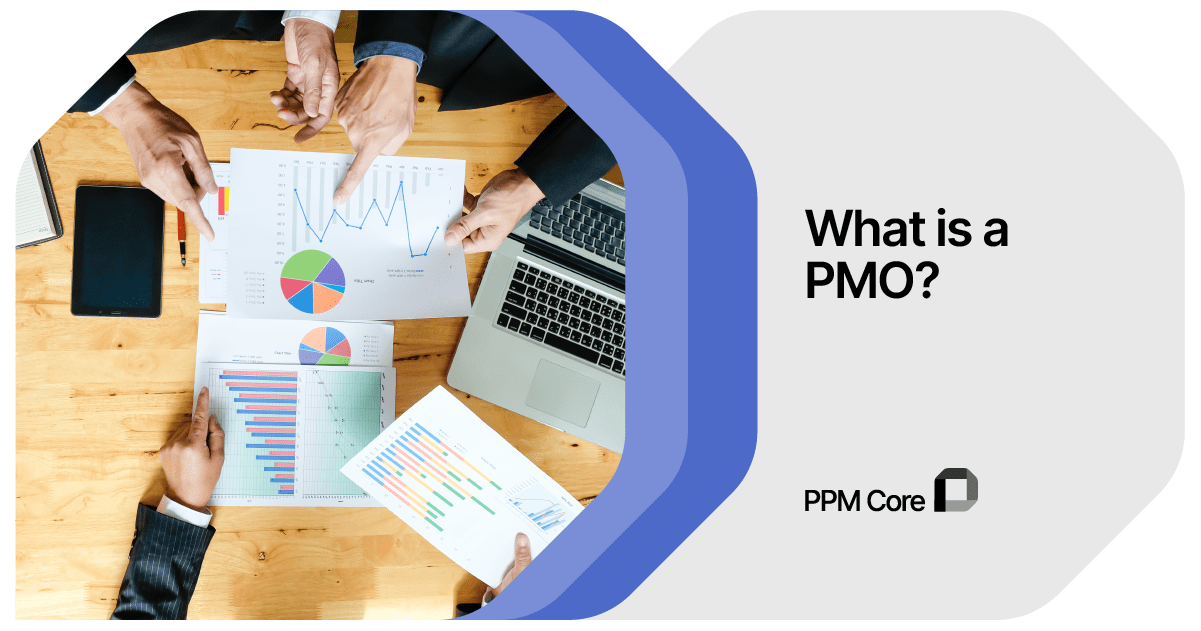What is a PMO – Project Management Office Explained
What is a PMO or project management office? Should you have a PMO in your organization and what benefits does a PMO add to the organization? In this article we will try to explore answers of all these questions.
Although the term PMO may refer to Project Management Office, Program Management Office or Portfolio Management Office, in general , when some refers to PMO, it is often meant and associated to be used for “Project Management Office”.
PMO is also very often related with “project governance”.
Organizations establish PMOs to have better governance on projects, programs and portfolios. The PMO represents a management structure that has the responsibility to standardize the processes related to governing projects within an organization, as well as facilitate different aspects of project management to support the organization’s goals.
The PMO is often formed based on the organizational needs and many organizational factors like organization size, structure, decision making process (centralized/decentralized), type of projects, organizational culture contribute to its look and functionality.
Project Management Office Types, Roles and Responsibilities
In today’s world, few PMOs are called VDOs (Value Delivery Office). Organizations those have flat structure, do highly customer centric projects and adopt agile approaches are mostly use the term VDO. In such an agile environment, VDO serves as an enabler role, rather a governance role like in traditional PMOs.
PMO can be different types based on its role and capacity within the organization. In broad range we can have following types:
- Supportive PMO
- Controlling PMO
- Directive PMO
- Agile PMO
- Enterprise PMO or EPMO
Supportive PMO
This is a very initial level PMO and we can see supportive PMOs when an organization grows and feels the need of a PMO for better governance of projects. Supportive PMO plays a consultative role and supports project managers with necessary templates, training, promotes project management best practices and works as a center point for project related information.
Controlling PMO
As organizations project management maturity level increases, PMO also matures and gains more control. Controlling PMO may step into project governance by establishing processes and policies. These PMOs may track and report cross functional projects and evaluate project performances.
Directive PMO
Directive PMOs manage projects directly and PMs report to the PMO directly. This kind of PMO can be seen in strong matrix or projectized organizations where PMO lead reports to the CEO directly. Here, projects are assigned, managed and reported by the PMO and thus directive PMO has considerable amount of control over project management activities.
Agile PMO
In agile organizations, we can find Agile Center of Excellence (ACoE) or Value Delivery Office (DVO). These PMOs work as an enabler for the agile projects within the organization and focuses on coaching team members, promoting agile practices, mentoring stakeholders on incremental and iterative value delivery processes.
Agile PMOs are emerging in places where organization is adopting decentralized approach to deliver projects and where quick decision making is a priority to respond changing customer demands. Agile PMO is value driven and can play multi-disciplinary roles.
Enterprise PMO or EPMO
PMOs can be layered like an Enterprise Level PMO (EPMO) can have subordinate functional PMOs. Enterprise level PMOs drive organizational strategy and manages portfolios, programs and projects. EPMOs exist in organizations where strong project management capabilities exists and the PMO is highly interactive with organization’s strategy, goal and objective.
Benefits of Project Management Office
Organizations can establish PMOs for various reasons but one of the primary goal is to have better control over project management activities. Having a PMO has lots of benefits and thus modern organizations are rushing towards setting up PMOs.
Below are some benefits:
- Fostering Project Delivery and Outcomes: PMOs helps to enhance organization’s project manage capabilities. They help to establish processes, methodologies and best practices as well as promote PM awareness throughout the organization and train resources for better project delivery. PMOs ensure project compliances and also resolve cross-functional issues in managing multiple projects.

Do you find this article interesting?
Subscribe to our Newsletter for updates on the latest blog articles.
- Maintaining the “BIG PICTURE”: PMOs often work as a strategic component of the organization. They drive portfolio, programs and projects in a coordinated way and have a bird’s eye view on organizations strategy and goals. Without a PMO, projects sometimes derailed from main objective and also got disconnected from the big picture. PMO also helps aligning projects with strategy by analyzing scope, reviewing business cases and measuring success factors.
- Fostering Project talents and capabilities: PMOs ensure the right resources are available in the organization to deliver projects successfully. Recruiting, coaching and mentoring is another important task of the PMO. PMO helps to onboard right tools and resources so that maximum project benefit can be obtained.
- Enabling smart processes, continuous improvement and better knowledge management: PMOs work towards simplifying processes and always thrive to achieve process improvements in project delivery. In addition, PMOs work as a central repository for project related knowledge and historical data.
Setting Up a Project Management Office – Where to Start
Setting up a PMO is never an easy task especially if we need to create it from a scratch.
In general, PMOs are formed due to variety of organizational needs and also, we need not to have all functionalities in a new PMO from the day one. Rather, the structure can always evolve based on needs and circumstances. Normally a PMO matures over time and gain more control as it progresses.
In our efforts to create PMOs, we must first decide three things listed below:
- Scope: What kind of job does the new PMO will do? What type of services it will provide?
- Stakeholders: Who will be the beneficiaries of the new structure?
- Value: What value the new organogram will provide to the organization?
Once above questions are answered, we can proceed to set up a PMO once having a strong sponsorship from the top management. Without having top management buy-in and strong advocacy, the entire process and departmental structure can not function well.
Next thing is to define the PMO organogram, PMO tools and processes. Once being chartered, it’s gain maturity and evolves over time.
PMO Software
Choosing the right software that can support your PMO with successfully implementing standards, governance and managing resources, projects, programs and project portfolios can be a challenging task.
What is a PMO software?
PMO software is a tool used by the project management office that enables its members to accomplish their goals in managing the organizations projects and resources in the most efficient way.
If you are looking for a complete all-around project management tool designed to help the PMO in managing all aspects of their work, the PPM Core cloud-based platform is a candidate that is not to be overlooked.
The PPM Core platform is an all-around solution that introduces a collaborative way to manage the 3Ps and the company’s resources, both cross-teams as well as cross-organizations, by bringing together all project participants and information into a centralized, modern platform that members of the PMO can utilize to accomplish their goals.
The platform is consisted of several modules including a Universal Project Viewer and Project Portfolio Management module with reporting features.
To learn more about the PPM Core software and how it can benefit your PMO and organization, you can book a personal online demonstration with the team.

